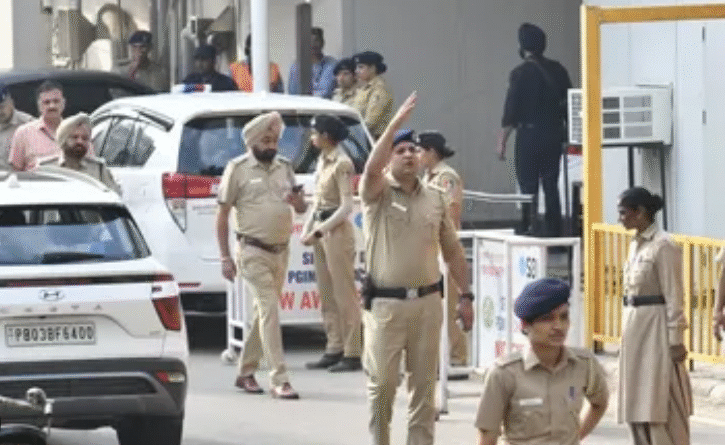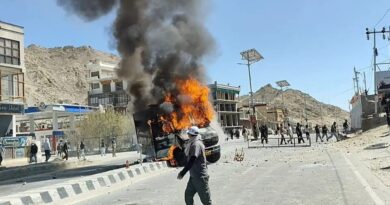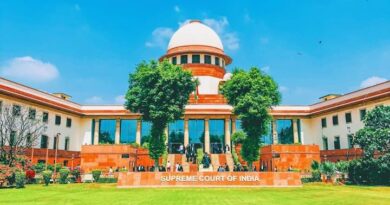Custody Clash: The Punjab-Chandigarh Police Standoff Over Rajya Sabha Poll Accused
How a Forgery Case Sparked Tensions Between Two Police Forces, Leading to Court Rebukes and High Court Interventions
The saga began with Navneet Chaturvedi, an independent candidate in the Punjab Rajya Sabha by-election for a vacant seat. Chaturvedi claimed support from 10 Aam Aadmi Party (AAP) legislators, submitting nomination forms with what he presented as their endorsements and signatures. However, the MLAs quickly denounced these as fabricated, triggering a criminal complaint of forgery against him.
Ropar (Rupnagar) police in Punjab registered a First Information Report (FIR) under relevant sections for cheating and forgery. Acting on intelligence that Chaturvedi was in Chandigarh, a team from Ropar—including the Superintendent of Police (SP), two Deputy SPs (DSPs), and an Inspector—rushed to apprehend him on October 14, 2025. This set the stage for an unexpected jurisdictional showdown.
Escalation at Sukhna Lake: A Tense Face-Off
Chaturvedi’s location at Sukhna Lake in Chandigarh turned into a flashpoint. He was under Chandigarh Police protection due to his nomination status, making him a “protected person” under local protocols. When the Punjab team arrived, they found Chaturvedi inside a Chandigarh Police vehicle.
What followed was a heated confrontation. Punjab officers, some in plain clothes, surrounded the car, demanding custody. Chandigarh’s Sector-3 Station House Officer (SHO) Narendra Patial, who was on site, refused handover without proper documentation, leading to verbal sparring. Eyewitness accounts, including from a local auto driver, described near-physical scuffles, with officers from both sides drawing pistols in a bid to assert control. The atmosphere grew volatile, with shouts echoing accusations of obstruction.
In a video clip circulating online (captured during the 1-minute-58-second altercation), SHO Patial is seen inside the vehicle alongside Chaturvedi, rebuffing Punjab’s SP who urged him to proceed to a station. Patial retorted that he would only move as per protocol, while the SP accused Chandigarh forces of aiding an escape. The Punjab officer even suggested seating their personnel in the car, but Patial stood firm, declaring he feared no one.
Intervention and Relocation: From Lake to Lockup
As tensions peaked, Chandigarh’s Senior Superintendent of Police (SSP) Kanwardeep Kaur arrived to de-escalate. She identified the suspect’s vehicle and instructed the Punjab team to bring their warrants to the Sector-3 police station instead of resolving it on the spot. Chaturvedi was swiftly transported to Chandigarh Police Headquarters in Sector-9 for safety.
By evening, he was shifted to Sector-3 station, where Punjab officers and lawyers gathered outside, camping with reinforcements. Chandigarh Police barricaded the premises and locked the gates, denying access. Punjab’s contingent swelled, but custody remained with Chandigarh. Notably, the vehicle used had undergone modifications—removing a beacon light and nameplate—raising questions about its official status; it was later identified as a reassigned asset from a former Deputy Commissioner of Police.
Meanwhile, police pulled Chaturvedi’s mobile call detail records (CDR), but they yielded limited insights into his movements.
Legal Battles: Courts Step In
Chaturvedi wasted no time seeking judicial relief. On the morning of October 15, he filed a petition in the Punjab and Haryana High Court, demanding a 10-day notice before any arrest by Punjab Police and full disclosure of all cases against him. He alleged multiple FIRs without specifics and claimed his nomination details were leaked to pressure AAP MLAs into withdrawing support, calling for an impartial probe.
Punjab Government countered with its own petition, arguing they held valid arrest warrants and an FIR, yet Chandigarh Police was obstructing justice. The High Court issued notices to the Punjab Government, mandating a response by November 4.
The drama intensified at Ropar Court in Punjab. Taking a stern stance, the judge questioned Chandigarh’s basis for holding Chaturvedi in custody without clear charges. Arrest warrants were issued, with directions for Chandigarh’s SSP to comply. Additionally, SHO Patial was summoned to explain within four days why the suspect was detained and under what provisions. This rebuke highlighted the jurisdictional friction, as Chandigarh— a Union Territory—operates independently from Punjab.
Ropar SSP Gulneet Singh later clarified that the operation involved senior officers based on a tip-off, emphasizing the FIR’s gravity but lamenting the lack of cooperation.
Broader Implications: Jurisdictional Tussle and Political Undertones
This episode underscores the delicate balance between Punjab and Chandigarh Police, often complicated by the latter’s status as a shared capital. The standoff not only delayed Chaturvedi’s transfer but also exposed procedural gaps, from warrant enforcement to inter-force communication.
Politically, the case ties into AAP’s dominance in Punjab and sensitivities around Rajya Sabha seats. Chaturvedi’s claims of MLA coercion via leaked forms add intrigue, potentially fueling debates on electoral integrity. As courts deliberate, the focus remains on ensuring due process amid the blame game.
For now, Chaturvedi stays in Chandigarh custody, with Punjab Police maintaining a vigil outside Sector-3. The High Court’s November deadline could tip the scales, but the incident serves as a stark reminder of how a single forgery allegation can ignite a full-blown law enforcement rift.
#PunjabVsChandigarhPolice #NavneetChaturvediCase #RajyaSabhaForgery




